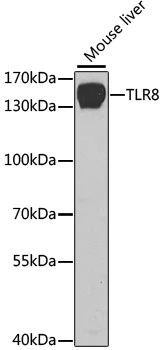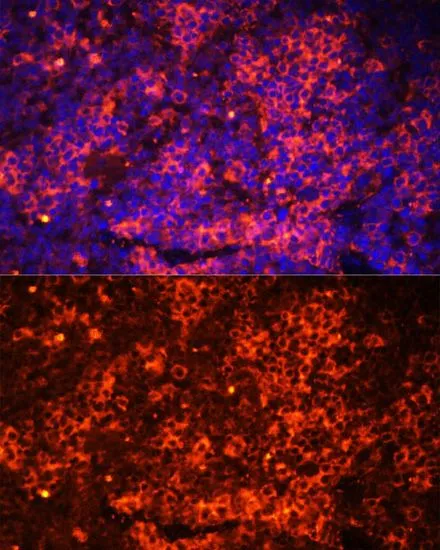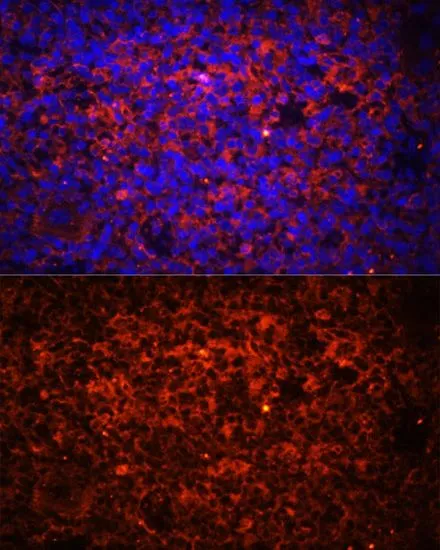
WB analysis of mouse liver tissue lysate using GTX55817 TLR8 antibody. Dilution : 1:1000 Loading : 25microg per lane
TLR8 antibody
GTX55817
ApplicationsWestern Blot, ImmunoHistoChemistry, ImmunoHistoChemistry Paraffin
Product group Antibodies
TargetTLR8
Overview
- SupplierGeneTex
- Product NameTLR8 antibody
- Delivery Days Customer9
- Application Supplier NoteWB: 1:500 - 1:2000. *Optimal dilutions/concentrations should be determined by the researcher.Not tested in other applications.
- ApplicationsWestern Blot, ImmunoHistoChemistry, ImmunoHistoChemistry Paraffin
- CertificationResearch Use Only
- ClonalityPolyclonal
- ConjugateUnconjugated
- Gene ID51311
- Target nameTLR8
- Target descriptiontoll like receptor 8
- Target synonymsCD288, IMD98, TLR-8, hTLR8, toll-like receptor 8
- HostRabbit
- IsotypeIgG
- Protein IDQ9NR97
- Protein NameToll-like receptor 8
- Scientific DescriptionThe protein encoded by this gene is a member of the Toll-like receptor (TLR) family which plays a fundamental role in pathogen recognition and activation of innate immunity. TLRs are highly conserved from Drosophila to humans and share structural and functional similarities. They recognize pathogen-associated molecular patterns (PAMPs) that are expressed on infectious agents, and mediate the production of cytokines necessary for the development of effective immunity. The various TLRs exhibit different patterns of expression. This gene is predominantly expressed in lung and peripheral blood leukocytes, and lies in close proximity to another family member, TLR7, on chromosome X. [provided by RefSeq, Jul 2008]
- Storage Instruction-20°C or -80°C,2°C to 8°C
- UNSPSC12352203




![FACS analysis of 10? human lymphocytes using GTX12120 TLR8 antibody [44C143]. Red : Primary antibody Green : isotype control Shaded histogram : cell only Antibody amount : 1 microg](https://www.genetex.com/upload/website/prouct_img/normal/GTX12120/GTX12120_2_FACS_w_23060519_534.webp)


